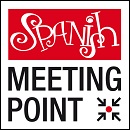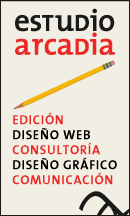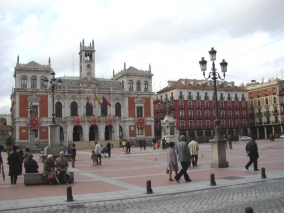Spanish schools and accommodation to study Spanish in Spain
Recent posts
Last schools
introduced
introduced
0 Accommodation

1 Spanish schools

Learning Spanish in Valladolid. The tourist guide to study your Spanish course.
General Information. 320,000 inhabitants and a greater metropolitan area which takes in another 100,000. 210 kilometres to the northeast of Madrid. It is the capital of the Autonomous Community of Castile and León. Valladolid was the capital of the Spanish Empire between 1601 and 1606. There was no urban settlement here until the Middle Ages, when Alfonso VI ordered the repopulation of the Spanish Meseta. It is said to be the city where people speak the best or "purest" form of Spanish. The services sector and the car industry predominate in the area. The University of Valladolid was founded in the 13th century and now has 32,000 students spread over several campuses. The campus in Valladolid is the most important, although there are campuses in six other cities of Castile and León. There is also a private university (Universidad Europea Miguel de Cervantes), which has 1,500 students. Valladolid is a very attractive place to study Spanish with many language schools offering a wide range of courses.
Surrounding Areas. Simancas (11 kilometres), a town with old-fashioned streets, a Roman bridge and a castle built in 1563, where you can find the Archivo General del Reino, a historical archive dating back to the age of Philip II. Another historical town, Tordesillas (28 kilometres), which in 1494 witnessed the signing of a famous treaty between Spain and Portugal, dividing South America between the two countries. Medina de Rioseco (43 kilometres), with outstanding monuments and a rich artistic heritage. Medina del Campo (58 kilometres), the town where Isabel la Católica died; there is now a medieval market held here every Thursday. Peñafiel (56 kilometres), with its 9th century castle. Valbuena de Duero (42 kilometres), where you will find most of the vineyards with Ribera del Duero designation of origin.
Main Sights. There are a number of important monuments in Valladolid's old quarter. Among the most noteworthy are: the Palacio de los Condes de Benavente, in Plaza de la Trinidad; the church of St. Paul (San Pablo), with a Gothic facade; the church of St. Martin (San Martín), with its Romanesque towers; the present-day Casa Consistorial, a palace with four towers which faces the Zorrilla Theatre; the former convent of St. Francis (San Francisco), where Christopher Columbus is said to have died; behind the Town Hall, you will also find the Central Post Office Building (Palacio de Correos y Telégrafos). The monuments are a major attraction for the many students who decide to study Spanish in Valladolid.
Culture. Valladolid's International Film Week, Seminci, is held in the Calderón Theatre at the end of October. It is one of the most important film festivals in Spain and attempts to promote the production of what could be classified as art house films. Other cultural events of interest include the Renaissance Week (Semana Renacentista) in May, which recreates the atmosphere of the age, and the International Meeting of Master Sand Sculptors (Encuentro Internacional de Maestros Escultores de Arena) in June. The museums of interest include: the Anatomy Museum (Museo Anatómico), founded in 1917; Valladolid's Archaeological Museum (Museo Arqueológico); the Science Museum (Museo de la Ciencia); the National Sculpture Museum (Museo Nacional de Escultura), in St. Gregory's College (Colegio de San Gregorio); the Oriental Museum in the Monasterio de los Filipinos, which holds the best collection of oriental art in Spain, and the House Museums of Cervantes, Zorrilla and Christopher Columbus. There are many parks and it is worth highlighting Campo Grande, the oldest city park and the Parque de las Moreras, with great walks and a river beach.
Shopping. Like most historic cities, the central shopping area can be found in the old quarter, among churches, convents and monasteries. There are also several shopping centres, two of the most important being Vallsur and Las Francesas. Antiques can be found in Valladolid's flea market, which takes place on Sunday mornings.
Gastronomy. To sample the local tapas and pinchos (the snacks that traditionally accompany drinks when bar-hopping), people usually head for the area in and around the Plaza Mayor, or La Antigua, an area near the Church of St Mary (Santa María). Roast meets are very typical: baby lamb, suckling pig and kid. Game meat, such as hare, rabbit and partridge, are also popular, as are gallina en pepitoria (hen cooked in an almond and saffron sauce) and gallo turdesilano (cock cooked in a stew). There are very good vegetables and pulses and fine cheeses and desserts, such as Santa Clara sponge cakes, empiñonados (sweet biscuits with pine nuts) and buñuelos de crema (fritter balls filled with whipped cream). The area also produces wines that have the Ribera del Duero designation of origin, one of the most renowned in the country, and also the white wines of Rueda.
Sports. The most important sports teams are: the city's first division football club, Real Valladolid, whose stadium is El Nuevo José Zorrilla; CB Valladolid, who are currently playing in Spanish basketball's first division, the ACB league. Valladolid is also one of the most important centres for rugby in Spain, so you can play or learn this sport here. There are several agencies in Valladolid where you can sign up for adventure sports, such as paintball and quad car excursions. In January there is also a famous winter gathering of motorcyclists known as Pingüinos.
Fiestas. Holy Week in Valladolid has been declared an Event of International Tourist Interest. Some of the sculptured images used in the processions are highly prized works of art. The fiestas that are held in honour of Valladolid's patron saint, San Pedro Regalado (13th May), last for several days and include music, bullfights and traditional folk costumes and events. It is also worth mentioning the fair (Feria) and fiesta of Nuestra Señora de San Lorenzo (beginning of September), which include theatrical performances, fairground attractions, firework displays and gastronomy events.
Transport. There is a high-speed train that runs between Valladolid and Madrid. The city also has several motorways that can be used to travel to many other cities, so it is easy to get from Valladolid to other Spanish cities. There is also a tourist bus with guided tours of Valladolid in various languages.
Nightlife. Students who decide to study Spanish in Valladolid will discover a very active nightlife, thanks to the city's university atmosphere. Most of the students and young people head for the area known as Paraíso y La Antigua. A more alternative scene can be found in Cantarranas. You will find a large number of bars and a great night-time atmosphere in San Miguel. However, Poniente-Coca is considered by many to be the coolest area for going out at night in Valladolid.
Surrounding Areas. Simancas (11 kilometres), a town with old-fashioned streets, a Roman bridge and a castle built in 1563, where you can find the Archivo General del Reino, a historical archive dating back to the age of Philip II. Another historical town, Tordesillas (28 kilometres), which in 1494 witnessed the signing of a famous treaty between Spain and Portugal, dividing South America between the two countries. Medina de Rioseco (43 kilometres), with outstanding monuments and a rich artistic heritage. Medina del Campo (58 kilometres), the town where Isabel la Católica died; there is now a medieval market held here every Thursday. Peñafiel (56 kilometres), with its 9th century castle. Valbuena de Duero (42 kilometres), where you will find most of the vineyards with Ribera del Duero designation of origin.
Main Sights. There are a number of important monuments in Valladolid's old quarter. Among the most noteworthy are: the Palacio de los Condes de Benavente, in Plaza de la Trinidad; the church of St. Paul (San Pablo), with a Gothic facade; the church of St. Martin (San Martín), with its Romanesque towers; the present-day Casa Consistorial, a palace with four towers which faces the Zorrilla Theatre; the former convent of St. Francis (San Francisco), where Christopher Columbus is said to have died; behind the Town Hall, you will also find the Central Post Office Building (Palacio de Correos y Telégrafos). The monuments are a major attraction for the many students who decide to study Spanish in Valladolid.
Culture. Valladolid's International Film Week, Seminci, is held in the Calderón Theatre at the end of October. It is one of the most important film festivals in Spain and attempts to promote the production of what could be classified as art house films. Other cultural events of interest include the Renaissance Week (Semana Renacentista) in May, which recreates the atmosphere of the age, and the International Meeting of Master Sand Sculptors (Encuentro Internacional de Maestros Escultores de Arena) in June. The museums of interest include: the Anatomy Museum (Museo Anatómico), founded in 1917; Valladolid's Archaeological Museum (Museo Arqueológico); the Science Museum (Museo de la Ciencia); the National Sculpture Museum (Museo Nacional de Escultura), in St. Gregory's College (Colegio de San Gregorio); the Oriental Museum in the Monasterio de los Filipinos, which holds the best collection of oriental art in Spain, and the House Museums of Cervantes, Zorrilla and Christopher Columbus. There are many parks and it is worth highlighting Campo Grande, the oldest city park and the Parque de las Moreras, with great walks and a river beach.
Shopping. Like most historic cities, the central shopping area can be found in the old quarter, among churches, convents and monasteries. There are also several shopping centres, two of the most important being Vallsur and Las Francesas. Antiques can be found in Valladolid's flea market, which takes place on Sunday mornings.
Gastronomy. To sample the local tapas and pinchos (the snacks that traditionally accompany drinks when bar-hopping), people usually head for the area in and around the Plaza Mayor, or La Antigua, an area near the Church of St Mary (Santa María). Roast meets are very typical: baby lamb, suckling pig and kid. Game meat, such as hare, rabbit and partridge, are also popular, as are gallina en pepitoria (hen cooked in an almond and saffron sauce) and gallo turdesilano (cock cooked in a stew). There are very good vegetables and pulses and fine cheeses and desserts, such as Santa Clara sponge cakes, empiñonados (sweet biscuits with pine nuts) and buñuelos de crema (fritter balls filled with whipped cream). The area also produces wines that have the Ribera del Duero designation of origin, one of the most renowned in the country, and also the white wines of Rueda.
Sports. The most important sports teams are: the city's first division football club, Real Valladolid, whose stadium is El Nuevo José Zorrilla; CB Valladolid, who are currently playing in Spanish basketball's first division, the ACB league. Valladolid is also one of the most important centres for rugby in Spain, so you can play or learn this sport here. There are several agencies in Valladolid where you can sign up for adventure sports, such as paintball and quad car excursions. In January there is also a famous winter gathering of motorcyclists known as Pingüinos.
Fiestas. Holy Week in Valladolid has been declared an Event of International Tourist Interest. Some of the sculptured images used in the processions are highly prized works of art. The fiestas that are held in honour of Valladolid's patron saint, San Pedro Regalado (13th May), last for several days and include music, bullfights and traditional folk costumes and events. It is also worth mentioning the fair (Feria) and fiesta of Nuestra Señora de San Lorenzo (beginning of September), which include theatrical performances, fairground attractions, firework displays and gastronomy events.
Transport. There is a high-speed train that runs between Valladolid and Madrid. The city also has several motorways that can be used to travel to many other cities, so it is easy to get from Valladolid to other Spanish cities. There is also a tourist bus with guided tours of Valladolid in various languages.
Nightlife. Students who decide to study Spanish in Valladolid will discover a very active nightlife, thanks to the city's university atmosphere. Most of the students and young people head for the area known as Paraíso y La Antigua. A more alternative scene can be found in Cantarranas. You will find a large number of bars and a great night-time atmosphere in San Miguel. However, Poniente-Coca is considered by many to be the coolest area for going out at night in Valladolid.
© TEXT: SPANISH IN TOUR.
VIDEO: Patronato de Turismo de Valladolid
VIDEO: Patronato de Turismo de Valladolid
























